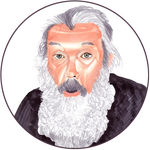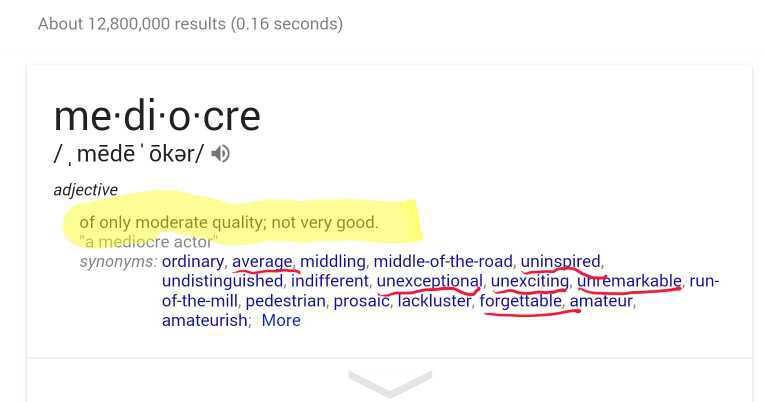 “This whole holographic story is the most radical thing that has happened to our understanding of space, time, and matter since the invention of quantum mechanics and relativity.”
“This whole holographic story is the most radical thing that has happened to our understanding of space, time, and matter since the invention of quantum mechanics and relativity.”—Leonard Susskind

In season 10 of Doctor Who, we learn of an alien race who has created a holographic replica of the Earth in order to play out different scenarios and find a way to take over the world, like a computer game training them for reality. The Earthling characters, then, question whether they are real or simply a hologram projection inside a holographic world. How would you know the difference?
Unfortunately for your sanity, this idea stems from a concept that is taken more seriously than you’d like to believe. Vlatko Vedral wrote a book called Decoding Reality, which suggests that the universe is not made of particles but instead information. In an episode of The Museum of Curiosity, science writer Marcus Chown says that Vedral’s theory is “definitely becoming a worldview that is more and more accepted. I think people do think that the universe is computing something.”
In fact, scientists already use the term “information” to explain what the universe is made of, though not necessarily in reference to the universe being inside a big computer. At 2011 World Science Festival, Leonard Susskind explains the term: “Information means distinctions, distinctions between things. A hydrogen atom is not an oxygen atom. An oxygen atom is not a hydrogen atom. There are distinctions between these things.” Yet we still use 1 and 0 as a way of making those distinctions, as we would with binary code in computer programming.
On the DVD recording of More Nine Lessons and Carols for Godless People (2012), comic book writer Alan Moore recalls some of his favorite scientific theories as to why the universe is such an odd place. Here’s one:
 “They got some particle tanks. It was in a field, I think, outside Frankfort. They were just soaking up particles from the void, measuring them, and they started to find that they’d got some strange mathematical noise in their readings. They got a letter from a physicist in America who was saying, ‘I just heard about your experiment. I don’t know if I’m right, but are you getting some strange mathematical noise in your readings that’s within these kinds of parameters?’ They said, ‘Yes, indeed we are,’ so they called him over so that he could explain what he thought was going on. He said, ‘I think that mathematical noise is the cosmic constant, which is basically the finest conceivable grain, if you like, of the whole universe. He said, ‘The thing is, the numbers are all right, but you shouldn’t ever be able to see it. You shouldn’t be able to detect it. It’s so infinitesimally small. The only way it would be big enough for you to detect is if it’s blurred. And the only way it could be blurred is if it’s actually being projected from beyond the rim of the known universe.’
“They got some particle tanks. It was in a field, I think, outside Frankfort. They were just soaking up particles from the void, measuring them, and they started to find that they’d got some strange mathematical noise in their readings. They got a letter from a physicist in America who was saying, ‘I just heard about your experiment. I don’t know if I’m right, but are you getting some strange mathematical noise in your readings that’s within these kinds of parameters?’ They said, ‘Yes, indeed we are,’ so they called him over so that he could explain what he thought was going on. He said, ‘I think that mathematical noise is the cosmic constant, which is basically the finest conceivable grain, if you like, of the whole universe. He said, ‘The thing is, the numbers are all right, but you shouldn’t ever be able to see it. You shouldn’t be able to detect it. It’s so infinitesimally small. The only way it would be big enough for you to detect is if it’s blurred. And the only way it could be blurred is if it’s actually being projected from beyond the rim of the known universe.’
“Now, this tied into something my favorite physicist Gerard ‘t Hooft had been talking about. Apparently the event horizon of a black hole can be considered as a two-dimensional surface, and you can read the quantum ripples that pass across that surface. What ‘t Hooft said was, ‘Well basically you can consider the whole universe to have at its outer boundary a two dimensional surface.’ He was pointing out that holograms are three-dimensional objects that are projected from a two-dimensional surface. He had said, probably quite light-heartedly, ‘Maybe we’re all living in a hologram.’
“This was basically what this guy said: ‘Yeah, I think we probably are, and in a couple of years I should have enough data to be able to prove that conclusively.’ The thing is, about two months, three months, after that announcement had been made, some other scientists thought, That’s interesting. Let’s come up with a simulation of what the physics of such a universe would be like if we were all a hologram being projected from the outermost edge of the universe. What would the physics be like? It turns out, actually a lot better than the ones that we’ve got now. Apparently it solves quite a lot of things, like the universe is missing mass and why gravity is so weak. So, yeah, I think that’s pretty conclusive, isn’t it? We’re all a hologram being projected from the external surface of the universe.”

Okay, so let’s back up and analyze some of what Alan Moore is talking about here. The principle that his favorite physicist Gerard ‘t Hooft is talking about is called the Holographic Principle. The principle doesn’t state that we are all a hologram simulation but instead that the amount of information in a black hole is exactly equal to the information on its surface area, and that may be true for other things, such as the universe. At the 2011 World Science Festival, Raphael Bousso summarizes the holographic principle this way:
“The context in which this was discovered was a very specific one where you’re far away, you throw some elephants into a small region, they form a black hole, and it evaporates. You want to ask the question by looking at this Hawking radiation that came out, can I figure out if it was elephants or zebras that made the black hole? That was resolved by now pretty definitely. We can look at it. But our universe is nothing like that…. Our universe is not a place where you can go far away and study Hawking radiation coming out. And nevertheless, it turned out to be true that this was just the tip of an iceberg. There is a completely universal relation between information and surface areas.”
So by this theory, the universe could be holographic, but does that mean that it’s a holographic simulation created by what Aristotle would call an “unmoved mover,” or a simulator? ‘t Hooft says, “I like to view nature as a gigantically big computer that has information going into it and information comes out processed. The processors, they are the laws of nature.” So maybe it is nature itself that is the simulator, not a conscious being outside of our universe. In this way, the universe behaves as if it is a computer, made up of 1s and 0s, but is not literally a computer.

Then again…

About half way through the Doctor Who episode “Extremis”, the concept switches from the world being a hologram projected from a computer to actually being inside a computer. With an inexplicable leap of logic, the Doctor declares that he is inside a computer and can therefore email people in the real world. Being in a computer is similar to being a hologram, but while a hologram might be a natural state of the universe, being in a computer suggests a conscious simulator living outside our universe.
American cosmologist Frank Tipler hypothesized the Omega Point. Marcus Chown summarizes Tipler’s idea as follows:
“In the Omega Point universe, the universe shrinks faster in some directions than others, so you get a temperature difference, and that temperature difference is the key because temperature difference drives all activity, all the information processing, all thought on Earth. So, if you’re a creature that can survive in this inferno as the universe shrunk, you’d be able to do more and more. You’d be able to process more and more information, think faster and faster. So even though you’re shrinking down to the end of the universe, you could live a lifetime in an hour, in a minute, in a nanosecond. So, to you, the universe would appear to extend eternally into the future. You’d be immortal. You could live forever. So what would you do? Well, one thing you could do is computer simulations. What would you simulate? Well, it turns out that all the light rays from the passed history of the universe funnel down onto the Omega Point, so you could actually use this information to reconstruct the whole history of the universe. So if this Omega universe ever comes about, then when we die, we’d probably find ourselves instantly resurrected along with our friends, our family, our pets that died when we were ten-years-old in this ultimate computer simulation at the end of time.”
In 2002, founding executive editor of Wired magazine Kevin Kelly asked Tipler whether he thinks the universe merely behaves like a computer, or is the universe literally a computer? Tipler replied, “I regard the two statements as equivalent. If the universe in all ways acts as if it was a computer, then what meaning could there be in saying that it is not a computer?”

Now, even Douglas Adams played with the idea that the Earth was actually just a big computer and that people are simply a part of the programming, computing some big question. Were The Hitchhiker’s Guide to the Galaxy to continue, would Arthur Dent have discovered that it is not simply the world that is a computer but the whole universe? I don’t think Adams would have been eager to support on the Omega Point hypothesis, as it does look quite like a scientific explanation for the afterlife, for which it has been heavily criticized. In the 2016 Isaac Asimov Memorial Debate, theoretical physicist James Gates says,
 “If you really believe that we are in a simulation, and there’s some structure that runs that simulation, unless something damages that structure, we can be re-purposed, so it starts to break down a very funny barrier between what people often think is a conflict between science and faith.”
“If you really believe that we are in a simulation, and there’s some structure that runs that simulation, unless something damages that structure, we can be re-purposed, so it starts to break down a very funny barrier between what people often think is a conflict between science and faith.”
Back to Alan Moore and his favorite theories as to why the universe is such an odd place:
“The reason that this universe is so perfect is because it’s a kind of simulation. This was the theory that we’re going to probably invent in the next twenty years a quantum supercomputer. Now, that would have such a capacity for storing information that you could have a bit of information for every particle in the known universe. So, you could basically simulate an entire universe in this computer. What these people [philosopher Nick Bostrom] were saying was, ‘If we’re going to be able to do that in twenty years time, that’s probably not the first time that’s happened, is it?’ In fact, the greater odds are that we are a simulation inside a simulation inside a sim… you see where that one’s going.”
So, if there are thousands or more simulations inside simulations, all filled with people who are programmed to think that they are real, what are the chances that you happen to be in the one real universe? Very slim indeed. This is, of course, at odds with Occam’s Razor, which suggests that the simplest answer is always the right one. The idea that the universe is a computer simulation is far from simple. We have a million questions. Here are some:
- How will we ever be able to prove we are not in a simulation if any evidence could itself be a simulation?
- How can we build a simulated universe if we don’t even know all the laws of physics yet?
- How can a computer calculate infinity? Quantum theory illustrates that there are infinite outcomes, so infinity is definitely real. Yet, how could you have a processor with infinite storage?
- And if the universe is a holographic simulation, you have an even bigger problem: No more than one bit per Planck area will fit, suggesting that a holographic universe has finite outcomes. In fact, Gerard ‘t Hooft takes it a step further and says that there may be determinism in the universe at a pre-quantum level (smaller than quantum) because within one Planck space, the bit can only be a 1 or a 0. That’s hardly infinite!
- How can we tell that we are in a simulation? Some physicists are already looking for evidence. Max Tegmark suggests that you could look for corner-cutting evidence (that maybe the simulator cut some corners in creating the universe) or that if you could find one thing in the universe that is not mathematical (perhaps consciousness?), then that would kill the simulation hypothesis. Zohreh Davoudi is studying cosmic rays, which are higher energy than anything we’ve produced in particle accelerators. You can observe them as they reach the edge of our observable universe to see how they interact with the edge of the simulation. Cosmic rays can probe the fabric of space-time.
- We are beings that create computers. Why would we assume that our creators are like us, also beings that create computers?
- Is it possible that we only think we are in a computer because we are living in an IT age?
- Or is it possible that we are not created by the simulators but instead emergent, that is, an unintended result of running the simulation?
- Just because we can create simulations, how do we know it’s possible to create simulations with conscious beings in it? Well, let me remind you that in 2013, Google expert Ray Kurzweil famously predicted that by the year 2045, we’ll be able to upload our full minds to computers.
- Even if our simulated universe is finite, how can any computer handle the size of a whole universe? Perhaps it is running on Just-in-Time Simulation, where the surface of Mars, for example, is not fully simulated until we put rovers down on it to explore it. Or, as Max Tegmark suggests, “either the size of our universe is actually finite or there’s some other trick like it just keeps repeating itself over and over again.”
This last remark from Tegmark is actually getting into some of what Janna Levin talks about in her 2002 Cosmology diary How the Universe Got its Spots. What if one of these “corner-cutting” techniques that Tegmark mentioned the simulators might be taking was tiling the simulated universe to make it appear infinite? This means that if you walk off the right side of the tile, you walk onto the left side of the next tile over, which happens to be identical to yours. You go far enough, you appear to end up back where you started. That means if you were to shine a really bright light off in one direction, eventually it would appear much dimmer from the opposite direction. As you know, looking into the night sky is looking back in time. In a tiled universe, some of those stars might be the same as one another at different ages. Levin speculates, “Maybe one of the ancient galaxies we see in the distance is really our own galaxy at an earlier age.” My question, perhaps more hauntingly, is what if they’re all echoes of the same galaxy and we really are alone in the universe. (Too much?)
 Levin suggests that in a tiled universe, if a girl “looked back far enough, she could watch her childhood replaying in the distance. She could see her life unfold and the lives of her ancestors…. History would become an observational science, a branch of astronomy. If we wanted to know who shot JFK, we could figure out how long it would take the light from 1963 to cross the finite space, build a strong enough telescope, point it in the right direction, and watch the ghost images replay that horrible day.” Now, it’s very possible that the universe is tiled without it being a simulation, as Levin’s book suggests. If we discovered our universe is this shape, it is evidence of simulation but there could be other explanations. Even so, Levin does write, “It is possible that Cambridge, London, the earth, the observable universe are just three-dimensional projections in a higher-dimensional space.” This is a little different than saying that the amount of information on something’s 2D surface is equal to the amount of information inside its 3D space, but I haven’t the room here (nor brain capacity) to discuss a universe that exists in more than three dimensions. (I suggest that you read Levin’s book instead.)
Levin suggests that in a tiled universe, if a girl “looked back far enough, she could watch her childhood replaying in the distance. She could see her life unfold and the lives of her ancestors…. History would become an observational science, a branch of astronomy. If we wanted to know who shot JFK, we could figure out how long it would take the light from 1963 to cross the finite space, build a strong enough telescope, point it in the right direction, and watch the ghost images replay that horrible day.” Now, it’s very possible that the universe is tiled without it being a simulation, as Levin’s book suggests. If we discovered our universe is this shape, it is evidence of simulation but there could be other explanations. Even so, Levin does write, “It is possible that Cambridge, London, the earth, the observable universe are just three-dimensional projections in a higher-dimensional space.” This is a little different than saying that the amount of information on something’s 2D surface is equal to the amount of information inside its 3D space, but I haven’t the room here (nor brain capacity) to discuss a universe that exists in more than three dimensions. (I suggest that you read Levin’s book instead.)

In all of this, we haven’t actually discussed the criteria to make Nick Bostrom’s statistical prediction a reality. In order for it to be statistically likely that we are a simulation, there has to be at least one simulation already. That means that the simulators, whether they are human or not, must be (1) capable of creating a simulation, and (2) interested in creating a simulation. Let’s assume that it is real humans, like the humans that we think we are, that has made our simulation. Are human beings capable and interested in making a lifelike simulation? According to Nobel Prize-winning astrophysicist George Smoot, yes and yes. During his 2014 TEDx Talk, he points out that the money that is invested in the gaming, entertainment, and porn industries are evidence enough that we are interested in creating lifelike simulations. There are also practical uses like simulating beings from our own human history in order to study minds of the past. Could we be the simulated minds of the ancestors of our simulators? Or perhaps humans may want to simulate the start of the universe to see how the Big Bang worked. What would happen if you left that simulation running? Are we an emergent property of someone not turning that simulation off before life started to be simulated? This brings me to the first question: Will humans be capable of creating a simulation? This year, the University of Zurich announced that they ran a simulation of the formation of our universe on a supercomputer for 80 hours. What came out of it was 25 billion virtual galaxies. The researchers who created this simulation (Joachim Stadel, Douglas Potter, and Romain Teysssier) are using it to study dark matter. It is the largest virtual universe ever simulated. So will humans be capable of creating a simulation of our universe? Yeah, I’d say we’re already there.
So, yes, maybe we are simulations created by our future selves. Maybe all the bad, senseless stuff that happens to us is the result of a twelve-year-old kid sitting at his laptop wreaking havoc for fun. Or, maybe we are naturally occurring holograms being projected from beyond the visible universe. Or, in the spirit of the Omega Point, maybe when we die, we find ourselves repurposed at the end of the universe alongside everyone we knew from life, like what happened to River Song in the Doctor Who episode “Count the Shadows.” You see? Like the tiled universe, everything comes back full circle.

—Max Tegmark
Sources: 2011 World Science Festival - A Thin Sheet of Reality: The Universe as a Hologram The Museum of Curiosity - Episode 1 Season 3 More Nine Lessons and Carols for Godless People (Go Faster Stripe) 2016 Isaac Asimov Memorial Debate - Is the Universe a Simulation? Phys.org, The Largest Virtual Universe Ever Simulated: University of Zurich (June 9, 2017) George Smoot, You Are a Simulation and Physics Can Prove It: TEDxSalford Janna Levin, How the Universe Got Its Spots: Diary of a Finite Time in a Finite Space (2003) Wired, God Is the Machine, Kevin Kelly (12/1/02)
Advertisements Share this:





